UEC Profile: The Scientist Who Came In From the Cold
Published: 20 July 2021
In the lab and in the field, an atmospheric chemist puzzles over clouds, aerosols, and hard-to-find ice-nucleating particles
Editor’s note: This is the fifth article in a new series of profiles on members of the ARM User Executive Committee (UEC).
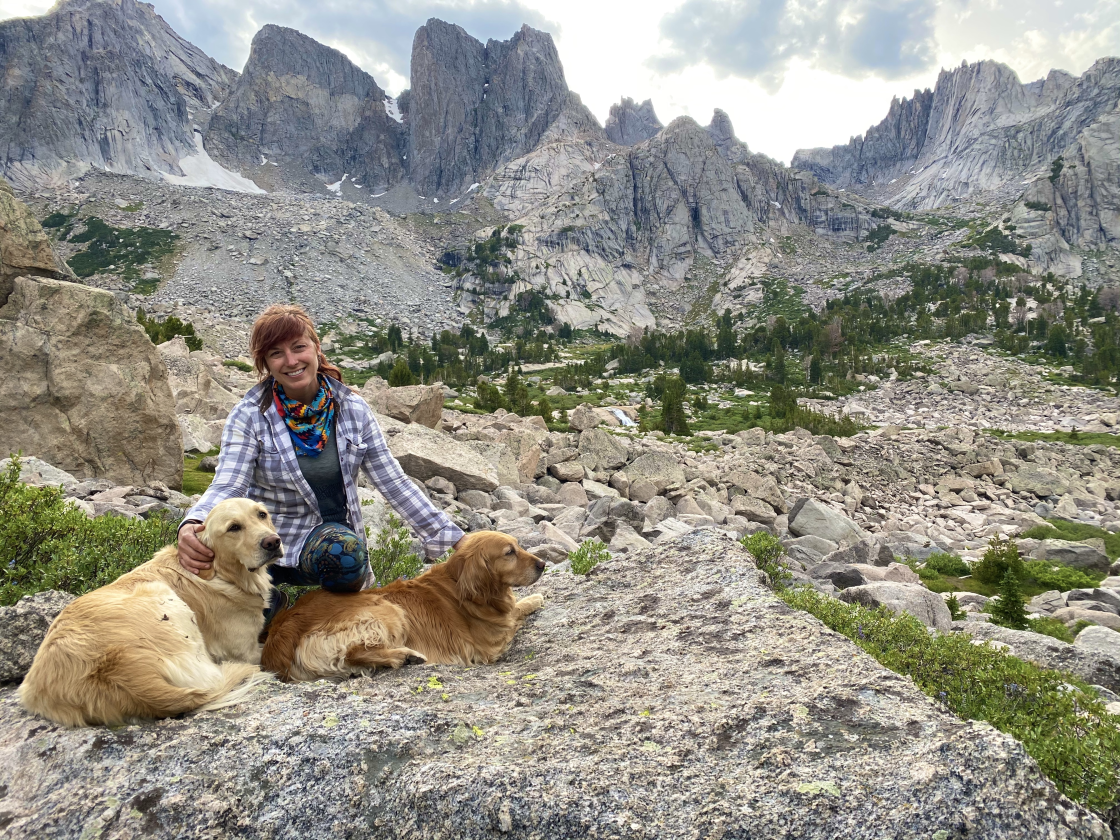
As a girl growing up in the rural Midwest, Colorado State University research scientist Jessie Creamean wished and wished and wished for a children’s chemistry set, but she never got one.
Today, she has the world’s biggest chemistry set to explore. It’s called the atmosphere, the complex layer of gases, liquid, and particulates enveloping the Earth and tacked in place by gravity.
Creamean specializes in aerosols. These microscopic liquid and solid particles, suspended in the air, influence cloud formation, precipitation, and the Earth’s energy budget. They help regulate solar radiation: how much reaches the surface, scatters within clouds, or rebounds back into space.
In particular, the Illinois native is interested in aerosols as they occur in polar regions. She focuses on aerosols called ice-nucleating particles (INPs), the seed-like bits of matter―dust, minerals, bacteria, pollen, sea spray, fungi, and other stuff―that allow clouds to form ice.
“We care about ice,” says Creamean. “It affects how clouds interact with sun and heat (through) the reflectivity and scattering properties of ice. It is also a key ingredient in precipitation.”
Her research mainly focuses on understanding the polar sources of aerosols and how those aerosols affect clouds.
In places like the central Arctic and northern Alaska―where Creamean has collected data while muffled in cold-weather gear―aerosol concentrations are often low. However, Creamean is interested in changes that happen as the dark of polar night gives way to warming periods with sunlight, patchy open water, exposed soil, and more aerosols from awakened biological processes.
She led a 2020 paper revealing that permafrost can be a rich source of INPs. NOAA and the National Science Foundation (NSF) supported that work.
Meanwhile, says Creamean, clouds in such frigid higher latitudes (INPs help form them) tend to be low, persistent, and “terribly important to the amount of light and heat at the surface.”
For the UEC
Of course, for any scientist involved with U.S. Department of Energy (DOE) projects or those of other federal agencies, there is another kind of complex and active atmosphere to deal with: the infrastructure of committees that keep the wheels moving in collaborative directions.
Creamean is one of the newest members of the DOE Atmospheric Radiation Measurement (ARM) user facility’s User Executive Committee (UEC). For nearly three decades, ARM has maintained a network of fixed and mobile observatories in an expanding grid of climate-critical regions. The UEC represents scientists who use ARM data in their work.
A longtime ARM data user, Creamean says she can help represent the interests of such a research community.
“I bring a perspective to the table that’s unique,” she says, as a polar-region aerosol specialist, ARM mentor (on INP issues, along with Colorado State colleague Tom Hill), fieldwork veteran, and university-based researcher. (ARM aspires to draw more university researchers and graduate students into the treasure house of its data on atmospheric processes.)
There are other aerosol experts on ARM’s UEC, including group chair Allison Aiken from Los Alamos National Laboratory in New Mexico and Art Sedlacek, an atmospheric chemist at Brookhaven National Laboratory in New York. But for a scientist still in her early career phase, Creamean also brings a lot of perspective on the rigors and rewards of fieldwork.
Most recently, starting in September 2019, she was aboard the German research icebreaker R/V Polarstern for the first leg of an epic, yearlong international science mission to the central Arctic called the Multidisciplinary Drifting Observatory for the Study of Arctic Climate (MOSAiC). The overall goal was to intensively measure atmospheric, hydrologic, and biological processes in a region of the world warming faster than any other and where sea-ice cover is shrinking dramatically.
Creamean’s onsite role in this climactically dynamic—and little-studied—region was highlighted in a 2020 article in Smithsonian Magazine. She collected samples of aerosols, ice, snow, and seawater, partly to study the origins of INPs and to get at high-latitude aerosol-cloud interactions. She lived on the slowly drifting mother ship, a combination laboratory, hotel, and power station that had been deliberately frozen into an ice floe.
When not out on the ice deploying a portable aerosol sampler she dubbed “C3PO,” or collecting sea ice as a member of the weekly ice coring team, Creamean archived her samples and helped analyze trace gases.
Creamean recently received funding from DOE’s Atmospheric System Research (ASR) program for a MOSAiC-related project she wrote will investigate “understudied aerosol-climate processes in the rapidly changing central Arctic.”
Arctic INPs
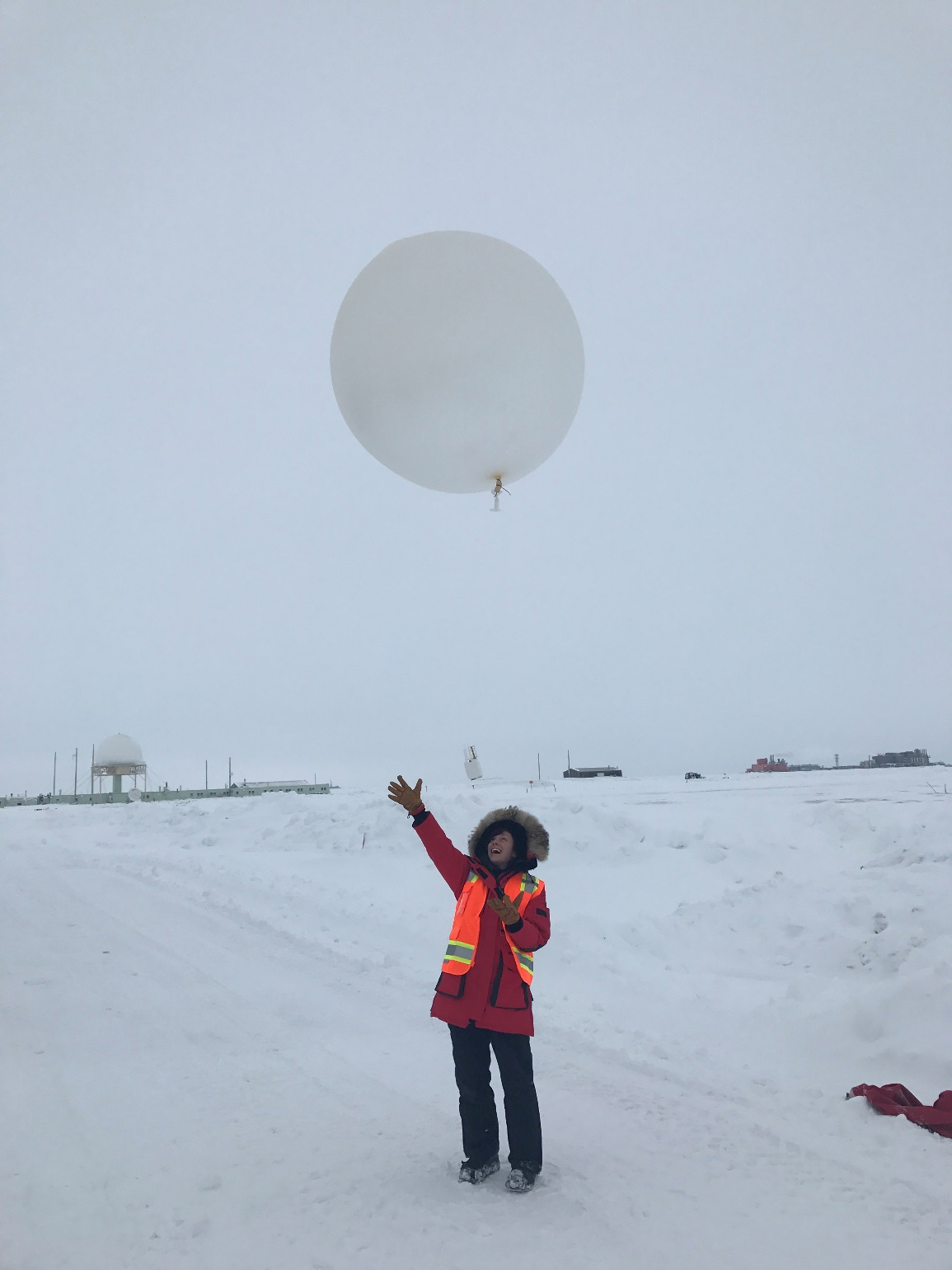
Creamean will likely have a paper drafted on her MOSAiC work by the end of summer. (Helping with the sample analysis are Colorado State graduate student Kevin Barry and technician Carson Hume.) It will report preliminary results on the seasonal variability of INPs in the central Arctic, based on aerosol samples taken throughout the whole year of MOSAiC.
Especially intriguing are INPs with biological origins, which in higher latitudes, says Creamean, are “vastly understudied.”
Months before MOSAiC began, she led a July 2019 paper on INPs transported great distances from the Bering Strait. They came from bacteria associated with blooms of phytoplankton, upwelled from the seafloor in the Arctic Ocean and pulsed from there into the atmosphere.
As the Arctic warms and its marine environments get more biologically productive, such ocean and atmosphere INP-transport systems may become increasingly crucial to understand.
By August 2021, Creamean will be in the field again for a month or more, studying and sampling INPs near the central facility at ARM’s North Slope of Alaska atmospheric observatory in Utqiaġvik (formerly known as Barrow).
It’s a continuation of her NSF work on permafrost as a source of INPs.
These soils turned out to be incredibly rich INP sources, says Creamean. “This could be a ticking time bomb” when paired with aerosols from lake and ocean water, which become more biologically active as the atmosphere warms and permafrost thaws.
One of her more recent papers, published in February 2021 and supported by ASR funding, reports on related aerosol work at an ARM site at Oliktok Point, Alaska. (Until recently, Oliktok was home to the third ARM Mobile Facility.) To derive novel aerosol vertical distributions in the Arctic, the study employs data from nearly three years of all-season tethered-balloon experiments.
The point of such investigations is to improve how aerosols are represented in models of cloud formation and radiative properties in the Arctic.
Mountains, City, and Lab
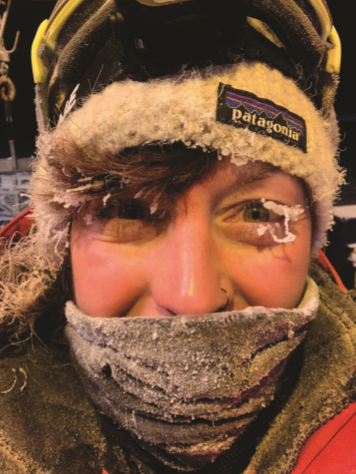
It is not just the Arctic and the occasional frost in her eyebrows that attracts Creamean. Starting in the fall of 2021, she will be part of the Surface Atmosphere Integrated Field Laboratory (SAIL) field campaign, ending in June 2023. SAIL will take place in a mountainous Colorado watershed and add greatly to scant observational data on precipitation and on land-atmosphere interactions that affect mountain hydrology.
How much water comes out of these mountains from rain and snow―and how do aerosols influence that? Creamean will help answer a SAIL science question on that subject. With Colorado State colleagues Hill and Hume, she will set up aerosol collection filters open to the atmosphere. Each collection unit, she says, resembles “a beer can with a salad bowl on top” to protect the filters from heavy rain and snow.
Even farther from the Arctic—in the Houston, Texas, area during the summer of 2022—Creamean will participate in a measurement-intensive interval during ARM’s TRacking Aerosol Convection interactions ExpeRiment (TRACER). The 2021–2022 campaign will use the first ARM Mobile Facility and other assets to investigate deep convection processes influenced by a medley of aerosol sources, including urban pollution and sea breezes.
Amidst all this work in all these disparate regions, Creamean will continue co-leading an ARM initiative to measure INPs with Hill.
The processes that INPs initiate “are relevant to anywhere on Earth,” says Creamean. “INPs seed ice in clouds and change cloud properties.”
Yet atmospheric observational data of these consequential particles are scant―especially in the Arctic.
In ARM’s newest mentorship, Creamean and Hill are analyzing a range of samples captured on filters collected in the field. Among sources for the samples streaming into Colorado State are MOSAiC, Oliktok, and ARM’s Southern Great Plains atmospheric observatory, which spans parts of Oklahoma and Kansas.
To complete such analyses, in part, says Creamean, “we use techniques that mimic cloud formation.”
Baking Soda and Vinegar
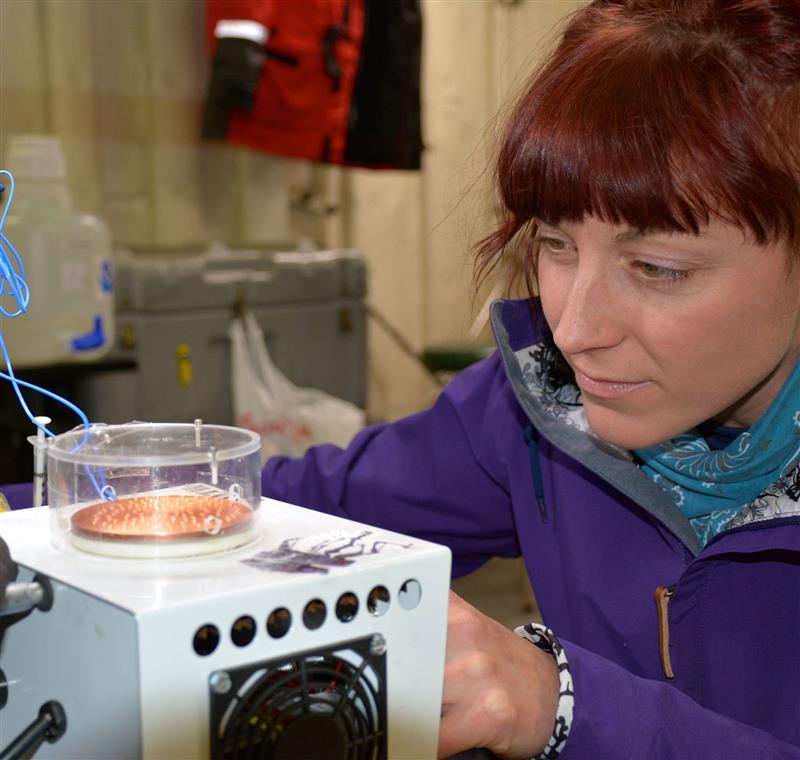
Creamean was in second grade or so when she wished so much for that chemistry set. A teacher had just “made volcanoes by mixing things that are reactive”—vinegar with baking soda, she says. Creamean wanted to know more.
An interest in chemistry bubbled through her early school life in Minooka and then Byron—both towns in Illinois—and “resurfaced in college,” says Creamean.
At the University of Illinois, Urbana-Champaign (B.A.S. with high distinction, 2007), she started out on a pre-med track.
“I was into how the body worked,” says Creamean, a challenge fitting into her life themes of “problem-solving and troubleshooting.”
Pre-med required a science major, so why not chemistry?
However, she was soon smitten with chemistry as a more satisfying course of study than medicine―one that is “the basis for life and the basis for everything around you.”
Organic and inorganic chemistry was a strong draw, in particular, because they involved solving puzzle-like reactions. Creamean did a senior thesis on a tough-to-solve set of reactions related to creating a metal complex that would absorb methane. (The product would provide a more sustainable way to transport methane as a fuel.) She was guided by Gregory Girolami, a professor, and Richard Jew, then a PhD student in chemistry who is now at the University of North Carolina at Charlotte.
California-Bound
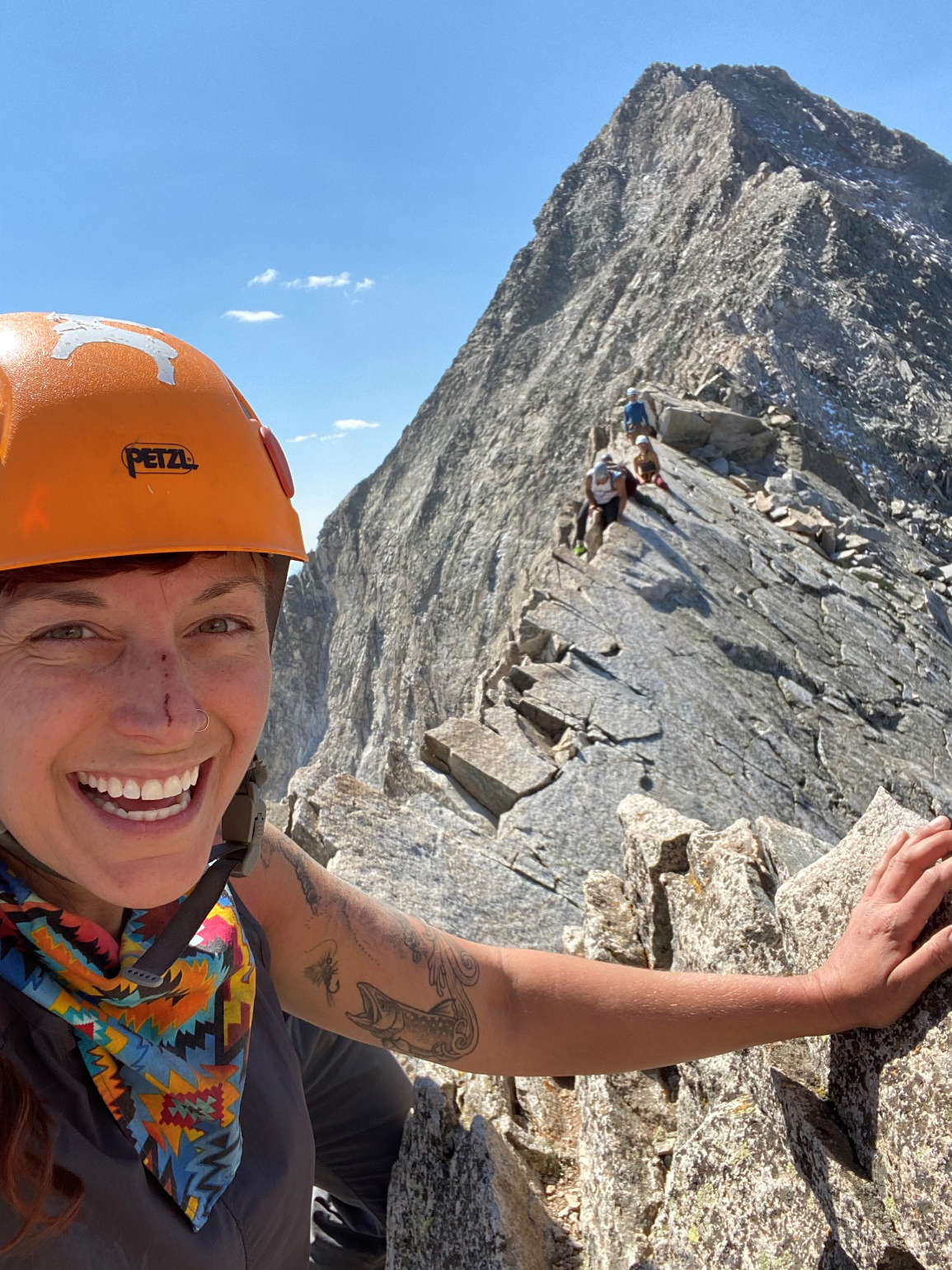
From rural Illinois, which is subject to injections of polar air, Creamean followed the sun to the University of California, San Diego (M.S., 2009, and PhD, 2012). She had lived in the Midwest for 22 years. (Creamean’s father, later a chemist himself, worked in a nuclear plant. Her mother was a preschool teacher.)
“Coming from Illinois, (California) was a nice reprieve,” she says. It also started her on a path to clouds and aerosols.
One day, as a first-year graduate student, the Midwestern transplant took a lab tour. By chance, Kerri Pratt, a PhD student a few years ahead of her, made a remark about “a research project to save the polar bears,” says Creamean. “That planted the seed (for high-latitude studies). It went into hibernation, but it had a chance to grow later.”
Pratt, an analytical chemist now at the University of Michigan, also ended up as a polar-studies aerosol specialist. She has led field campaigns for ARM in Alaska and had a guest aerosol instrument aboard the Polarstern during MOSAiC. Creamean helped monitor it.
At San Diego, inspired earlier by an environmental chemistry course at Illinois, Creamean settled into a dissertation on how aerosols can affect clouds and precipitation on the U.S. West Coast. (Atmospheric scientist Kimberly Prather was her advisor.)
To get a flavor of that dissertation work, turn to Creamean’s first peer-reviewed paper, a 2011 report on cloud condensation nuclei activity during winter storms in the remote Sierra Nevada in Northern California. (“It was beautiful,” she says of her fieldwork setting―a portent of the outdoors life she leads today as a hiker, mountain biker, skier, and technical rock climber.)
The dissertation work also awoke in Creamean a sense of “water as a resource and how limited it can be,” she says.
She continued that kind of work as a postdoctoral researcher (2012–2014) on the CalWater project with the hydrological group at NOAA in Boulder, Colorado.
Colder Regions Call
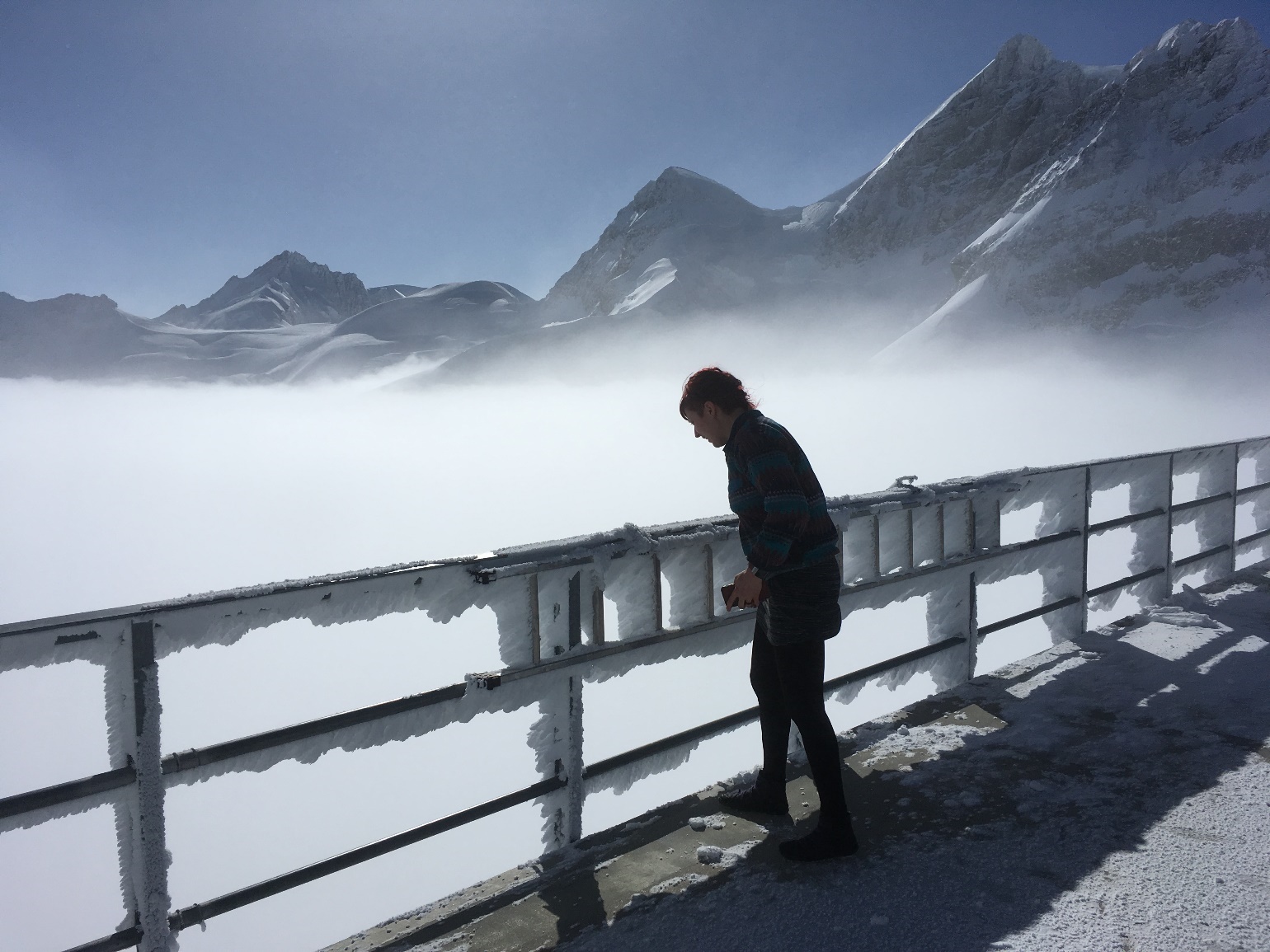
Starting in 2014, Creamean took part in an NSF early career workshop series called Microbes at the Interface of Land-Atmosphere Feedbacks. Over three years, she attended workshops in France, Italy, and Sweden. During later workshops, she led a working group focused on arctic science themes.
Colder regions came calling for real in 2016, when Creamean traveled to what was then Barrow, Alaska, for educational outreach to middle and high school students. (After MOSAiC, in 2020, she was an educator again, as a virtual classroom lecturer.)
By 2017, still eager to get very cold, Creamean was doing her first high-latitude aerosol fieldwork as a NOAA researcher aboard the Coast Guard cutter Healy in the Bering Strait and the Chukchi Sea, a marginal sea of the Arctic Ocean that connects Alaska to Siberia. (She repeated the science adventure in 2018 and later too.)
It was also in 2017 that Creamean was a first-time principal investigator (PI) for an ARM field campaign, Ice Nucleating Particles at Oliktok Point (INPOP).
Cold weather came calling again in 2018, when Creamean was co-PI for a campaign called Ice Nucleation Characterization in the Alps of Switzerland (INCAS), which investigated sources of INPs in the Swiss Alps. (The Swiss National Science Foundation supported that research.) She reported on her Alpine work in a 2019 paper.
What is the coldest Creamean has been so far? Probably a minus-50-degree day in Oliktok. Working on the ice during MOSAiC in the dead of polar night was no day at the beach either―despite clothing she has described as “like wearing five sleeping bags.”
But even worse (better?) is ahead. Creamean has proposals out to do research in Antarctica.
Keep up with the Atmospheric Observer
Updates on ARM news, events, and opportunities delivered to your inbox
ARM User Profile
ARM welcomes users from all institutions and nations. A free ARM user account is needed to access ARM data.


















